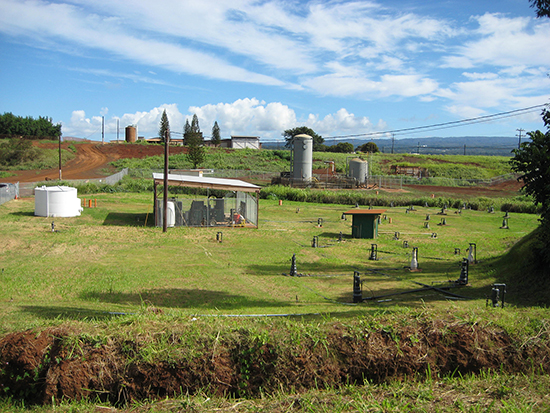|
Subscribe / Renew |
|
|
Contact Us |
|
| ► Subscribe to our Free Weekly Newsletter | |
| home | Welcome, sign in or click here to subscribe. | login |
Construction
| |
 |
January 22, 2018
Best in State: Gold Award
Unique or Innovative Applications
Golder Associates

Project: Del Monte (Oahu Plantation) Superfund site
Client: Del Monte Fresh Produce
At the completion of a remedial investigation at the Del Monte Corp. Superfund site on the Hawaiian island of Oahu, Del Monte Fresh Produce faced a major problem.
More than 1,000 cubic yards of soil contaminated with chemical fumigants had been generated. The presence of the chemicals required that the soils be handled as hazardous waste. Because there are no treatment facilities on the Hawaiian islands, the soil would need to be shipped to Oregon for incineration at a cost of more than $3.5 million.
The fuel involved in shipping would also impact the environment. Additionally, the planned remedial action for the site included continuous pump-and-treat of impacted groundwater, which would also continue to generate hazardous waste requiring disposal.
Golder Associates worked with the owner to design, test and put into full operation a “phytoremediation” system at the site. Phytoremediation — the use of living plants to decontaminate soil or water — had not previously been used for the remediation of these specific soil fumigants. The system would treat both the impacted soils from the remedial investigation and clean up the impacted groundwater continually generated during the ongoing site remediation.
The project began with bench-scale testing conducted by the University of Washington, which showed a plant called koa haole to be capable of metabolizing the chemicals.
Golder then worked with Del Monte to develop a pilot-scale phytoremediation system at the site to test if impacted soils and groundwater could be remediated using koa haole. The two-year project showed positive results, so Golder designed and installed a full-scale phytoremediation system.
The system includes 35 perched groundwater monitoring wells equipped with automatic pneumatic pumps to provide continuous dewatering of the contaminated portions of the aquifer. The contaminated water is collected in a 9,000-gallon tank, equipped with electronic float switches that direct the contaminated water to the phytoremediation treatment cells.
The treatment cells require very little maintenance: only occasional replacement of the drip irrigation lines and trimming of the koa haole trees is needed. The system was designed to allow for mostly autonomous operation that provides continuous capture and treatment of the contaminated groundwater.
The full-scale system has operated since 2008 and has successfully treated more than 4.7 million gallons of groundwater to concentrations below drinking water standards. Based on the sustained reduction in contaminant concentrations, Del Monte and Golder will request that the Environmental Protection Agency approve a shutdown of the treatment system in 2018.
Other Stories:
- National finalist: Platinum Award
Structural Systems
Magnusson Klemencic Associates - National finalist: Gold award
Structural Systems
COWI North America - National finalist: Gold award
Special Projects
Hart Crowser - National finalist: Gold award
Special Projects
Parsons - Best in State: Gold Award
Successful Fulfillment of Client/Owner Needs
GeoEngineers - Best in State: Gold Award
Social, Economic and Sustainable Design
J-U-B Engineers - Best in State: Gold Award
Future Value to Engineering Profession
MIG/SvR - Best in State: Gold Award
Complexity
Stantec - Engineer of the Year


